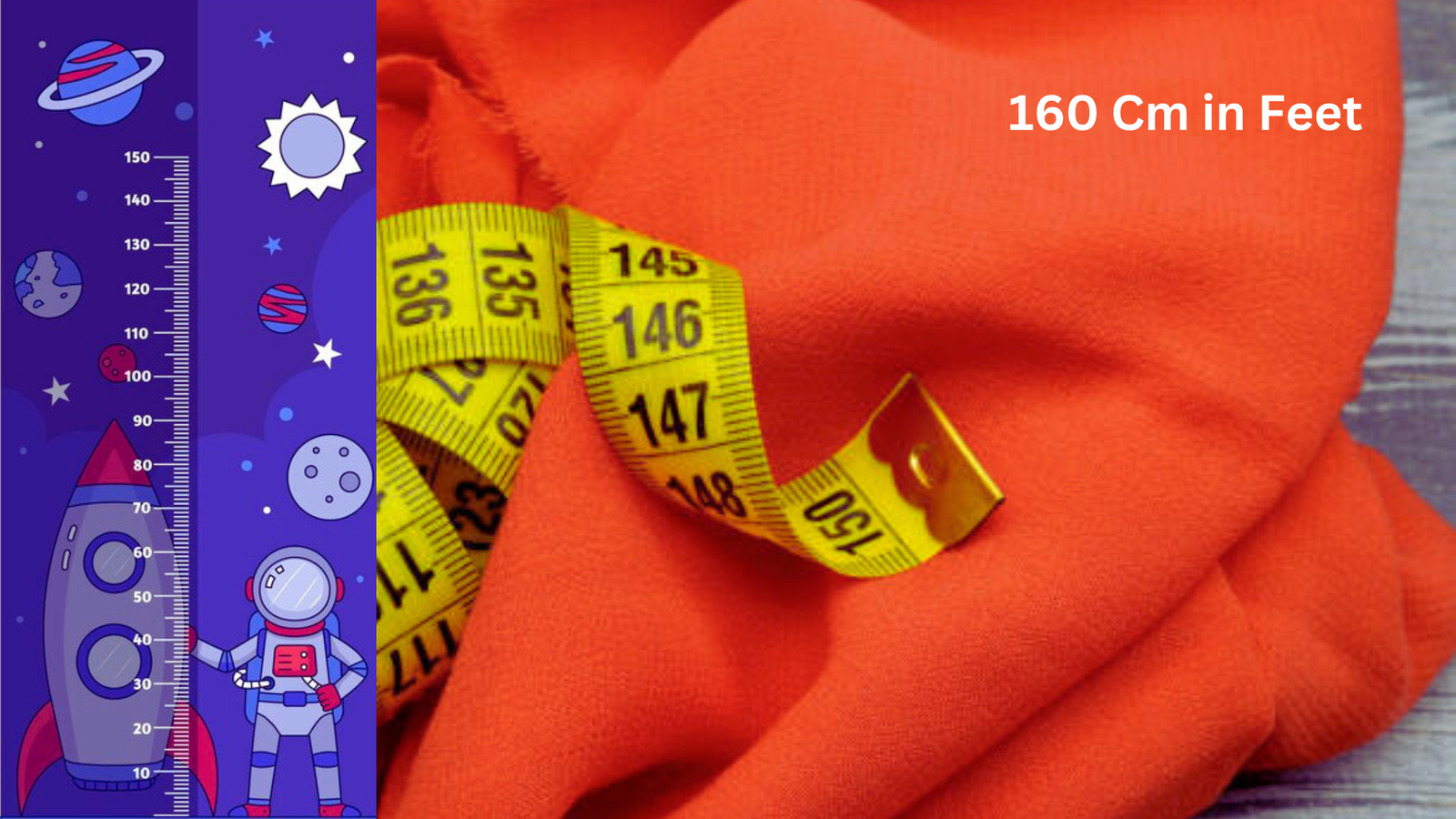Introduction
Converting measurements from metric to imperial is an unusual task faced by many people around the world. One of the regularly asked questions in this regard is the conversion of one hundred and sixty cm to toes.160 cm to feet Understanding this conversion is vital for several purposes, such as the highest dimension, designing spaces, and the taste of world travel or training. This article aims to provide a step-by-step guide to 160 cm to feet converting one hundred sixty cm to toes, explaining the meaning of this conversion, the mathematical system involved, and the various contexts in which this conversion is particularly useful. In addition, we will discover records and packages of both metric and imperial structures.
How much is one 160 cm to feet?
To convert one hundred sixty cm to toes, it is vital to understand the connection between centimeters and feet. The metric device, which includes centimeters, is widely used around the world, as is 160 cm to feet the imperial device, includes feet and inches. and widely used in the United States and some other countries.
Conversion formula
The basic formula for converting from centimeters to feet is:
Feet
=
Centimeters
X
0.0328084
Feet=centimeters×zero.0328084
For 160 cm the conversion would be:
160
cm
X
zero.0328084
=
five.24934
ft
160 cm×0.0328084=five.24934 feet
Break it down
To recognize the above result, it is regularly beneficial to break down the conversion into inches and inches, as this is a 160 cm to feet extra common display in the imperial device. One foot equals 12 inches, so the decimal part of the foot measurement can be converted to inches.
Calculate the ft diversity:
hundred and sixty
cm
X
zero.0328084
≈
5.24934
feet
160 cm × 0.0328084≈five.24934 feet
Extract the integer element (which is five feet) and the 160 cm to feet decimal element (which is 0.24934 feet).
Convert decimals to inches:
0.24934
feet
X
12
=
2.99208
inches
0.24934 feet × 12 = 2.99208 inches
One hundred sixty cm is therefore 160 cm to feet approximately identical to 5 feet 3 inches.
The historical context of measurement systems
Metric system
The metric system became advanced during the French Revolution and became standardized in France in 1795. It is a full-size machine based on the decimal system and is used by most countries internationally. The device is designed to be popular and straightforward, with devices that range over ten.160 cm to feet For example, there are one hundred centimeters in a meter and 1000 meters in a kilometer.
Imperial system
The imperial system of measurement has its .160 cm to feet roots in the British Empire and became widely used in the British colonies. It consists of devices along with inches, fingers, yards, and miles. The United States continues to use the imperial device for many normal measurements, although the metric device is used in scientific and medical fields.
Transfer between systems
Conversion between these 160 cm to feet systems is important due to the global nature of change, travel, and communication. For example, a person in the United States may want to list their height in feet and inches, while their health statistics will be in centimeters and kilograms.
Meaning of conversion: one hundred and sixty cm to feet
Personal height measurement
One of the more .160 cm to feet unusual ways to use the change from one hundred sixty cm to feet is to measure height. Understanding this conversion is especially helpful for people transitioning between nations that use specific dimensional structures. For example, if you are 160 cm tall, understanding that this equates to approximately five feet three inches will allow you to better understand the top discussions .160 cm to feet in the United States or other international locations using the imperial gadget.
Sports and Fitness
In sports and fitness, there is often a need to convert measurements for school applications, competition standards, and system specifications. For example, athletes from nations using the metric system may want to convert their peaks and other measurements when participating in global competitions held in nations using 160 cm to feet the imperial gadget.
Design and implementation of interiors
160 cm to feet Specific measurements are important in fields related to the arrangement and creation of interiors. Designers and developers often work with both metric and imperial systems and rely on proximity to business and client options. Converting one hundred sixty cm to feet can be important when ordering materials, designing areas, 160 cm to feet, or communicating dimensions to stakeholders who use imperial equipment.
| Read More : Quora |
Education and science
Educational materials and medical 160 cm-to-foot research often require conversions between metric and imperial devices. For example, students with backgrounds in human anatomy or physics may encounter measurements in both structures. Understanding conversions such as 160 cm to fingers allows students and researchers to maintain accuracy and consistency in their images.
Practical examples of conversion
Example 1: Height measurement
Imagine a student from Europe, where metric instruments are common, going to the US for higher education. They want to fill out paperwork that demands their maximum in feet and inches. When they know that their top is one hundred and sixty cm, they use the conversion system to find that their top is approximately five fingers 3 inches. This allows them to accurately fill out the forms and recognize key discussions about their new environment.
Example 2: Designing a room
An interior seamstress working on call in the United States receives measurements from a patron in Europe. The buyer specifies a wall height of one hundred and sixty cm. The designer needs to transform this size to fit to make sure the layout plans are accurate and
meet the buyer’s expectations. By converting one hundred sixty cm to approximately five feet 3 inches, the designer can proceed with confidence.
Example3: Sports performance
The world athlete from the rustic 160 cm to feet use of the metric machine participates in the opposition in the United States. Their train must report the athlete’s height in feet and inches for registration purposes. The 160cm athlete’s peak is converted to 5ft 3in, ensuring efficient padding of the registration bureaucracy.
Step-by-step conversion
Step 1: Understand the basic conversion rate
One foot is equal to 30. Forty-eight centimeters.160 cm to feet Conversely, one centimeter is equal to zero.0328084 fingers. These constants are a prerequisite for conversion between 2 devices.
Step 2: Perform the conversion
To convert one hundred 160 cm to feet sixty cm to toes, multiply 160 by 0.0328084:
hundred and sixty
X
zero.0328084
=
five.24934
feet
160×0.0328084=five.24934 feet
Step 3: Separate the feet and toes
Extract the integer part (5 digits) and the 160 cm to feet decimal element (0.24934 feet).
Step Four: Convert the decimal number to inches
Multiply the decimal by 12 (there are 12 inches in a foot):
0.24934
X
12
=
2.99208
inches
zero.24934×12=2.99208 inches
So 160 cm is approximately five feet 3 inches.
Step 5: Verify the transfer
Double-check the calculations to get some accuracy. This can be done using online conversion tools or calculators designed for metric to imperial conversions.
Advanced considerations
Accuracy and roundness
In many realistic cases, accuracy is vital.160 cm to feet While the basic conversion gives an amazing estimate, more precise calculations may be needed for scientific, scientific, or engineering purposes. When converting 160 cm to fingers, rounding to the nearest inch is usually sufficient for maximum common use.
Using Conversion Tools
There are several online devices and cell 160 cm to feet programs that can do these conversions quickly and accurately. These devices are especially useful for people who often need to transform measurements between metric and imperial structures.
Understanding context and usage
Different contexts may require exclusive precision ranges. For example, peak measurements for clinical information would perhaps require larger actual values than for normal interviews. Understanding the best context and desired accuracy can help you decide on the right conversion technique.
Historical development of measuring systems
Evolution of the metric system
The goal of improving 160 cm to the metric gadget was to create a standardized, time-tested measuring gadget that became easy to use and recognize. It became based on the principles of the decimal gadget, which made the calculations honest. Over time, the metric system was adopted in most countries and became common for medicine and global trade.
The roots of the imperial system
Imperial accouterments evolved from a mixture of closely related paraphernalia used in medieval England. It became standardized at some point in the nineteenth century, generally to streamline exchange and trade within the British Empire. Despite the global shift towards the metric gadget, the imperial device remains deeply rooted in the United States and continues to be used for regular measurements.
The constant need for conversion
Despite the considerable use of the metric system, the patience of the imperial gadget in positive countries requires a constant need for conversions. This is especially important in global industries including manufacturing, where a 160 cm to feet item may be designed with one gadget, but you want it to fit well with another.
Application to convert one hundred and sixty cm to feet
Everyday life
In everyday life, understanding 160 cm to feet one’s height in unique dimensional structures can be essential for various sports, such as dealing with bureaucracy, finding clothes, or playing sports. 160 cm to fee Knowing that one hundred and sixty cm equals five inches and a tip makes it easier in these normal conditions.
Health care
In healthcare, accurate height measurements are essential for determining appropriate drug dosages, assessing growth and development, and calculating body mass index (BMI). Healthcare professionals often 160 cm to feet want to convert measurements to ensure some consistency and accuracy in patient care.
Travel and international relations
For vacationers, especially those who move between international locations, the use of distinctive 160 cm-to-fee measurement structures, and transfer of know-how, such as 160 cm toes, is important. This understanding helps to understand the local customs, is attractive to the residents, and adapts to the new environment.
Education
Students studying subjects such as physics,160 cm to fee engineering, or biology often encounter measurements in each of the metric and imperial systems. The ability to move between these structures increases their potential to grasp ideas and solve problems accurately.
Engineering and construction
In engineering and construction, accurate 160 cm-to-foot measurements are the foundation of business success. Gadget conversion guarantees exactly that
Conclusion
Understanding the conversion of 160 cm to feet is more than just a mathematical exercise; it’s a practical skill that bridges the gap between the metric and imperial measurement systems. This conversion – 160 cm, which equals approximately 5 feet 3 inches – is necessary in a variety of contexts such as personal height measurement, sports and fitness, interior design, healthcare, education, and international travel 160 cm to feet
By mastering this conversion, individuals can easily move between different measurement systems, ensuring accuracy and consistency in their daily lives and professional activities. Whether 160 cm to fee you’re filling out forms, designing a space, participating in international competitions, or studying abroad, knowing how to convert 160 cm to feet and inches can simplify many tasks and improve your understanding of measurements across different systems.











